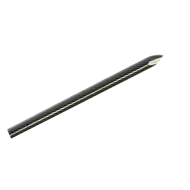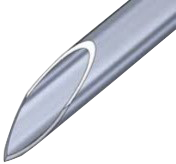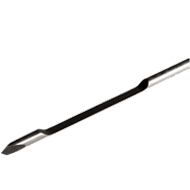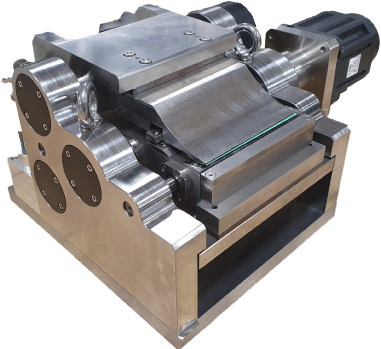Manufacture Burr-Free Needles with ECG
Electrochemical Grinding (ECG) and Micro Grinding Machines for Medical Needles
Needles are used in countless medical procedures from biopsies to checking blood glucose to delivering medication and vaccines. For proper function and patient safety, the tip must be sharp and burr-free. A core belief at MMT is that patient safety begins with the manufacturing process.
Electrochemical Grinding (ECG) provides fast, accurate, and burr-free results with no metallurgical damage and no distortion. This eliminates the need for deburring or other secondary operations, improving productivity and reducing scrap. Glebar’s line of Tridex ECG Machines can manufacture a wide variety of medical device points on tubing or solid wire such as trocars and K-wires.
The Glebar CAM.2 Micro Grinder can also be set up for continuous grinding of trocar tips while maintaining tolerances of one micron.
PGS-100
The Tridex PGS-100 Burr-Free Electrochemical Point Grinding System is a fully programmable pointing and material handling system that easily integrates with the Tridex SG-1645 or SG-2060 ECG Grinders.
CAM.2
The Glebar CAM.2 Micro Grinder is the perfect machine for grinding small, complex, precision medical applications such as complex medical guidewires, radiuses, needle points, and non-linear shapes.
Cannula Point Styles
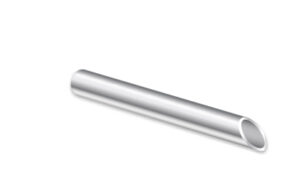
Bias Grind
A single grind/cut point. Angle needs to be specified. Unless noted otherwise, measured from longitudinal axis.
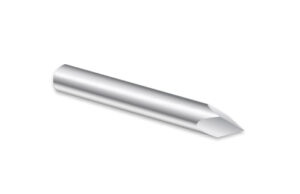
Trocar
A sharp point formed by three faces, used in applications with tubing, typically with a two-piece welded assembly.
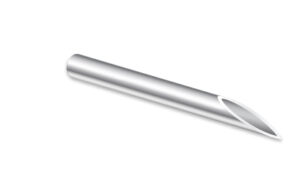
Vet Point
Used chiefly in life science and industrial applications, with a point sharpened on the back and side of the lumen. Typically referred to as lab point style #4 or reverse grind. Hand ground in small volumes, with secondary grind angles not toleranced. Larger volumes can be machine ground and have tolerances applied. Standards: Regular (A) Bevel: 12-15° primary bevel angle, Short (B) Bevel: 18-20°, Quincke (C) Bevel 25-30°
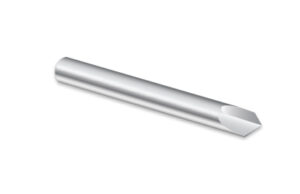
Diamond Point
Features two grinds on either side of a solid wire tip, along with secondary grinds at the tip.
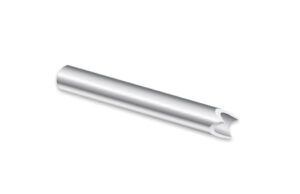
Franseen / Trephine
Mostly used in bone biopsies, with a tube ground on three sides to form a sharp tip. Also available with two sides or four faces.
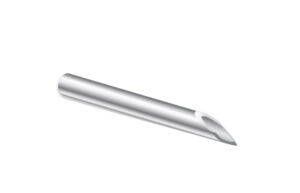
Tri-facet / Lancet
CNC ground and sharpened on front of lumen. Consistent geometry, cost effective at volume, and available with custom primary angles and angles of rotation. Standards: Regular (A) Bevel: 12- 15° primary bevel angle, Short (B) Bevel: 18-20°, Quincke (C) Bevel 25-30°.
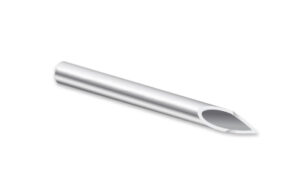
Back Bevel
Lancets (or secondary facets) are centered on a plane 180º, opposed to the Primary Facet. Purposed to provide greater cutting edge for catheter cannula.
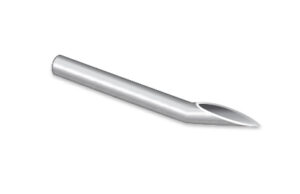
Deflected Point (Anti Coring)
Chiefly used to reduce coring during septum penetration. “Huber” point primary bevel is deflected behind lumen so that it is essentially parallel to longitudinal axis. Contact us with questions regarding process limitations.
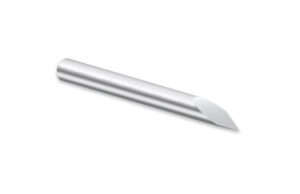
Stylet
Rod which fills lumen of cannula, has matching point geometry, and generally used for biopsy
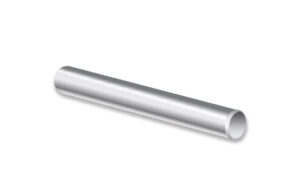
Razor Edge
Often used in biopsies and precision dispensing, proprietary technologies allow for a vastly superior sharp edge.
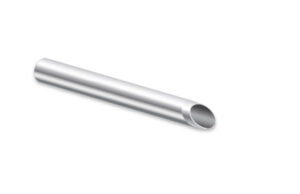
Menghini
A primary facet generated by a secondary facet which extends entirely around the lumen. Applied for liver biopsy with ability to remove tissue sample without rotation of the device.
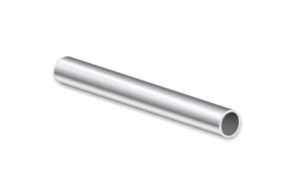
Probe Point (Blunt End)
Commonly known as lab point style #3, this cannula features a 90-degree square cut at the end.
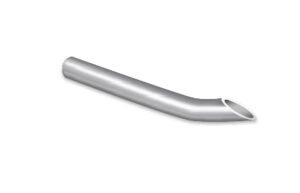
Tuohy
Cannula with slightly bent or curve end for controlled penetration depth, and insertion of epidural catheters. Directs catheter at an angle. Used for placement of epidural spinal catheter.

